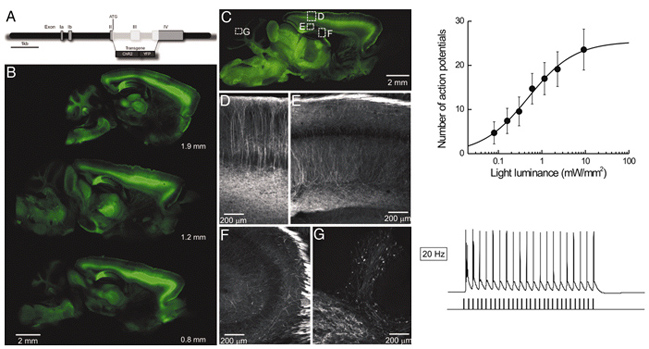High-speed mapping of synaptic connectivity using photostimulation in channelrhodopsin-2 transgenic mice
[Publisher Link] [Local Copy]
Wang, H., Peca, J., Matsusaki, M., Matsusaki, K., Noguchi, J., Qiu, L., Wang, D., Zhang, F., Boyden, E. S., Deisseroth, K., Kasai, H., Hall, W. C., Feng, G., Augustine, G. J. (2007) High-speed mapping of synaptic connectivity using photostimulation in channelrhodopsin-2 transgenic mice, Proceedings of the National Academy of Sciences 104(19):8143-848.

To permit rapid optical control of brain activity, we have engineered multiple lines of transgenic mice that express the light-activated cation channel Channelrhodopsin-2 (ChR2) in subsets of neurons. Illumination of ChR2-positive neurons in brain slices produced photocurrents that generated action potentials within milliseconds and with precisely timed latencies. The number of light-evoked action potentials could be controlled by varying either the amplitude or duration of illumination. Furthermore, the frequency of light-evoked action potentials could be precisely controlled up to 30 Hz. Photostimulation also could evoke synaptic transmission between neurons, and, by scanning with a small laser light spot, we were able to map the spatial distribution of synaptic circuits connecting neurons within living cerebral cortex. We conclude that ChR2 is a genetically based photostimulation technology that permits analysis of neural circuits with high spatial and temporal resolution in transgenic mammals.
Resources associated with this Publication:
[ChR2: channelrhodopsin-2 (light-driven cation channel)]